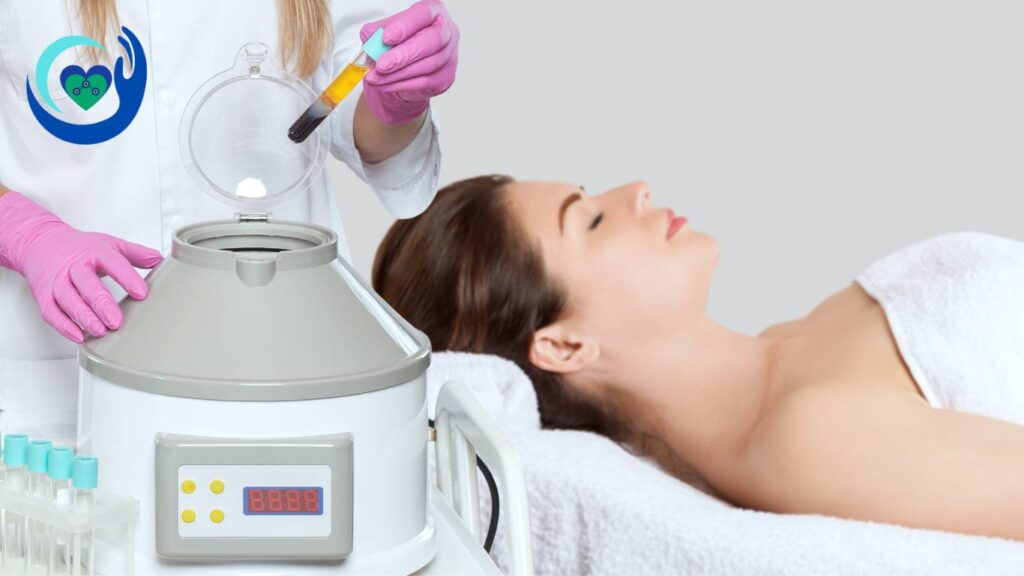
Super O – Platelet-Rich Plasma (PRP) therapy is an advanced regenerative medicine technique with the improved formula due to high oxygen concentration. This innovative approach has gained traction in various medical and aesthetic fields due to its potential to enhance healing, promote tissue regeneration, and improve overall recovery processes.
Table of Contents
What is PRP?
Platelet-Rich Plasma (PRP) is a concentration of platelets and growth factors derived from a patient’s own blood. The PRP procedure involves drawing blood, processing it in a centrifuge to separate the plasma rich in platelets, and then injecting this plasma into targeted areas of the body. PRP is commonly used in orthopedics, dermatology, and cosmetic surgery to promote healing, reduce inflammation, and stimulate hair growth. A clinical research conducted by Xiong et.al., (2023) proven that PRP injections were effective in reducing pain symptoms in patients with knee osteoarthritis, temporomandibular joint osteoarthritis , and ankle osteoarthritis but did not show significant efficacy in patients with hip osteoarthritis.
The PRP Process
The process of Super O – PRP involves:
- Blood Collection: A small amount of blood is drawn from the patient.
- Centrifugation: The blood is centrifuged to separate the PRP from other blood components.
- Ozonation: The PRP is then infused with ozone gas, which can be done through a closed-loop system that ensures sterility and maintains the integrity of the ozone.
- Injection: The ozonated PRP is injected into the targeted area.
Indications for Super O-PRP Therapy
Super O-PRP therapy is indicated for various conditions, including:
- Musculoskeletal Injuries: Such as tendonitis, ligament injuries, and osteoarthritis.
- Sports Injuries: To promote recovery from sprains, strains, and overuse injuries.
- Chronic Pain Conditions: Including lower back pain and joint pain.
- Hair Restoration: Stimulating hair growth in cases of androgenetic alopecia.
- Skin Rejuvenation: Enhancing the effects of aesthetic treatments like microneedling and laser therapy.
- Wound Healing: Accelerating recovery in chronic wounds or surgical sites.
Differences Super O-PRP and Regular PRP
While both ozonated PRP and regular PRP utilize the patient’s own blood to promote healing, several key differences set them apart:
- Oxygenation: Super O-PRP has increased oxygen, potentially enhancing tissue oxygenation and metabolic processes.
- Antimicrobial Properties: More natural antimicrobial effects, which may reduce the risk of infection at the injection site.
- Enhanced Healing: Super O-PRP may lead to a more pronounced anti-inflammatory effect and accelerate healing compared to standard PRP alone.
- Growth Factor Release: Super O-PRP may stimulate the release of additional growth factors from platelets, further promoting tissue regeneration.
How Super O-PRP Improves Recovery and Growth Hormone Levels
The application of ozonated PRP can potentially improve recovery times and enhance growth hormone levels through several mechanisms:
- Enhanced Oxygen Delivery: The increased oxygen supply can boost cellular metabolism and energy production, which is crucial for tissue repair.
- Inflammation Reduction: Super O-PRP anti-inflammatory properties help manage pain and swelling, facilitating quicker recovery.
- Stimulation of Growth Factors: Super O-PRP may enhance the release of growth factors such as vascular endothelial growth factor (VEGF) and insulin-like growth factor (IGF), which play pivotal roles in tissue healing and regeneration.
- Improved Circulation: Super O-PRP therapy can enhance blood circulation, ensuring that nutrients and oxygen reach injured tissues more effectively.
Platelet-Rich Plasma (PRP) therapy has gained popularity for treating joint inflammation, particularly in conditions like osteoarthritis and tendinitis. The success rates can vary based on several factors, including the specific condition being treated, the individual patient’s characteristics, and the treatment protocol used.
General Success Rates of Super O-PRP Therapy
- Osteoarthritis: Studies suggest that PRP therapy can provide significant relief for osteoarthritis patients, with success rates reported between 60% to 80% in terms of pain reduction and improved joint function. Many patients experience relief for several months to over a year after treatment.
- Tendinitis: For conditions like rotator cuff tendinitis or tennis elbow, PRP has shown success rates ranging from 70% to 90% in reducing pain and improving function.
- Post-Surgical Recovery: PRP therapy is often used to enhance recovery from joint surgeries, with studies indicating improved healing times and outcomes in various orthopedic procedures.
Factors Influencing Success
- Condition Severity: Patients with early to moderate-stage joint issues typically report better outcomes compared to those with severe degeneration.
- Age: Younger patients may respond better to PRP therapy due to more robust healing capabilities.
- Injection Technique: The expertise of the clinician administering the treatment can significantly impact the effectiveness of PRP therapy.
- Preparation of PRP: The method used to prepare PRP (e.g., the concentration of platelets and the presence of white blood cells) can influence outcomes.
- Adjunct Treatments: Combining PRP with other therapies (like physical therapy or hyaluronic acid injections) can enhance results.
Conclusion
Super O-PRP represents a promising advancement in regenerative medicine, combining the healing properties of PRP with the therapeutic benefits of ozone. With its ability to enhance recovery, reduce inflammation, and promote tissue regeneration, Super O-PRP is being increasingly recognized as an effective treatment option for a wide range of medical and aesthetic conditions. As research continues to explore its full potential, Super O-PRP may become a staple in modern therapeutic practices.